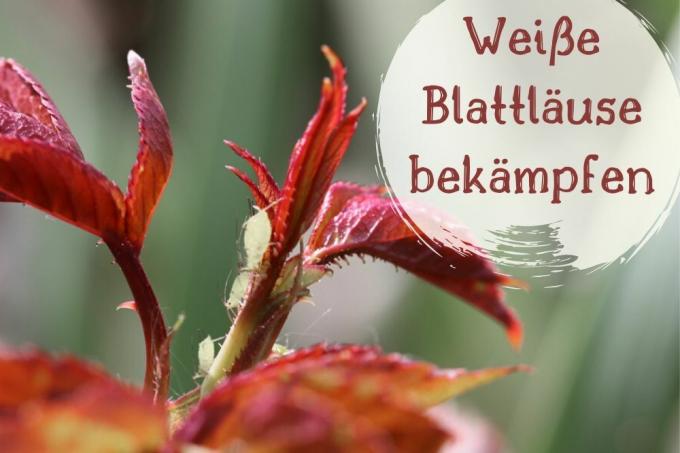
table of contents
- Diet and Harm
- Tried and tested home remedies
- Soft soap
- Suitable neighboring plants
- Natural predators
- Broths, infusions and teas
- From nettle stock to fern leaves
- From garlic to black tea
Every gardener and plant lover knows them - and everyone fears them: aphids. Among the many species of aphids, it is often white aphids that infest the plants. But if you garden close to nature, a few lice won't upset you so quickly. With a little patience and the right home remedy, you can get rid of the animal without resorting to the chemical club. The top priority: keep calm and act consistently against the pests.
Diet and Harm
White aphids prick the pathways of plants with their proboscis in order to get to the plant sap. They are primarily targeting the proteins it contains. However, proteins are only found there in low concentrations. The lice cannot utilize the high amounts of sugar in the plant juices, which is why they excrete it as so-called honeydew. Soot fungi use the honeydew as a breeding ground and can (in contrast to the aphids themselves) cause considerable damage. In addition, the sucking insects release special proteins in their saliva, which effectively prevent wound closure. Pathogens such as viruses and bacteria enter the plant via the puncture site and can lead to its death. So you should do something about the pests as early as possible.
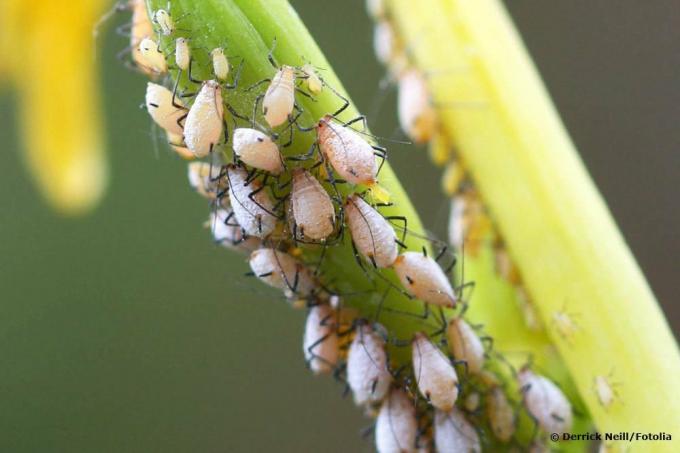
Tried and tested home remedies
White aphids can certainly also be combated with professional pesticides from the garden market. The granulates or liquids available there, however, are often enriched with poisons that not only destroy the lice, but possibly also damage the environment. Natural home remedies are therefore more suitable so that you can get rid of the pests in an ecologically harmless way.
Soft soap
Probably the best-known means of combating white aphids is soft soap, also known as potash soap. It contains neither fragrances nor dyes and does not require any artificial thickeners. Personal care products, on the other hand, usually contain additives that many plants cannot tolerate well. Soap is able to peel the sticky lice off the leaves and stems of the plant and is therefore an effective home remedy for an infestation.

- 50 g soft soap
- 1 liter of lukewarm water
If the infestation is severe, you can add 20 ml of alcohol or spirit (a shot glass full) and spray the infested plant with it.
Note: Did you know that soap herb also contains a substance that acts like soap and is therefore also suitable for combating lice?
Suitable neighboring plants
Some plants naturally have a deterrent effect on aphids. This not only protects you from infestation with the sucking insect, but also extends into the neighborhood. However, the right combination is important here:
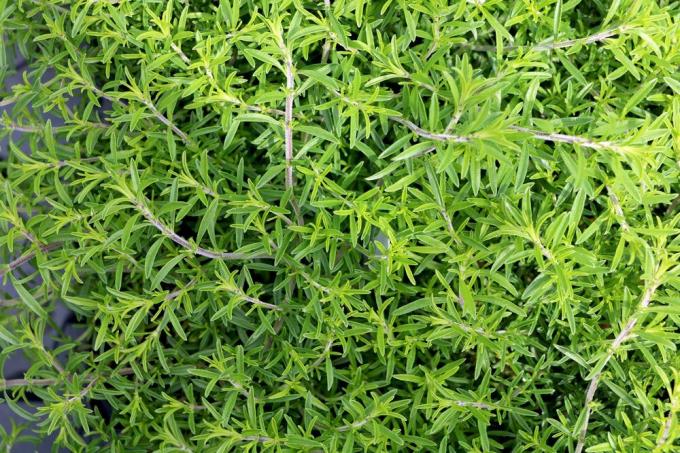
- Savory on beans
- Lavender: roses
- Nasturtiums: tomatoes and fruit trees
- Chervil protects salads
Natural predators
Fortunately, the unloved white aphids also have a number of natural predators. Ladybugs and their larvae are particularly effective. They eat up to 400 of the lice a day. The lacewing larvae are even more voracious. Each one of these larvae creates up to 500 of the plant pests. In the outdoor area you attract these beneficial insects with a varied garden, in which of course no insecticides are allowed. In order to fight the white aphid naturally in the house and in the garden, some of these beneficial insects are available in specialist shops.

- Lacewing
- Ladybug
- Parasitic wasps
- Hoverflies
- Predatory bugs
Broths, infusions and teas
In the fight against white aphids, infusions from certain plants that grow almost everywhere in gardens or along the roadside have also proven themselves. Sprayed on the pests - especially the undersides of the leaves - for several days, they effectively help to get rid of the aphid infestation.
From nettle stock to fern leaves
Nettle stock
An effective way to control white aphids is with a broth that you can easily make from nettles (urtica).
- 200 g of fresh nettles
- alternatively: 20 g dried material
- 1 liter of water
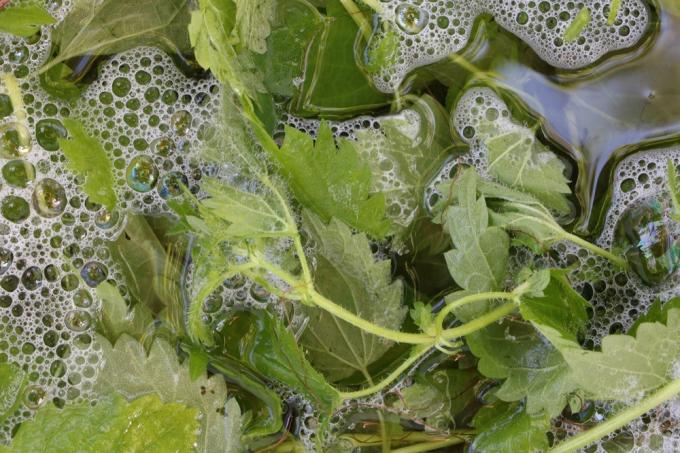
approach
Crush the nettles with your hand, scissors or a knife and pour cold water on them. The whole thing has to drag for at least twelve hours. Filter off all solid components through a cloth or sieve and use the broth undiluted for spraying.
Note: If the nettle brew is already fermenting, it must under no circumstances be sprayed on the plants. But it can be used as a fertilizer.
Ivy leaves (Hedera helix)
The common ivy that grows in most of our gardens has a very special property that makes it a perfect remedy in the fight against white aphids: it is poisonous. And not only for people and pets, but also for sucking pests. The saponins contained in it kill the lice even in low concentrations.
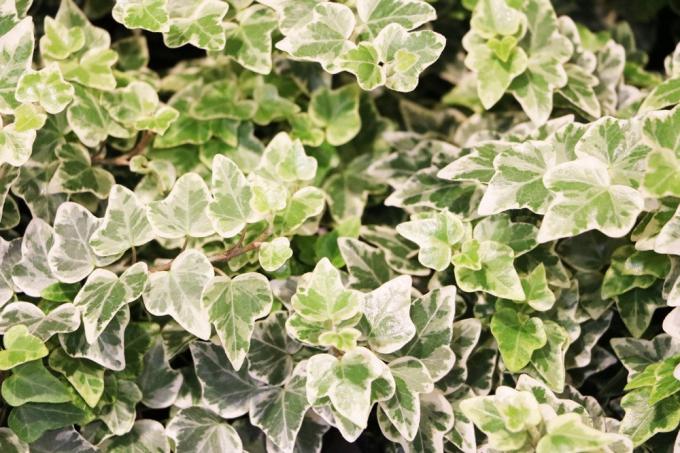
- about 50 ivy leaves
- 1 liter of water
approach
Roughly chop the ivy and let it simmer in a liter of water over medium heat for at least 30 minutes. After cooling, sift out the leaves and press them out again firmly by hand. The brew can be sprayed undiluted onto the lice.
Note: When using poisonous plants, you should always work very purposefully and take the necessary protective measures.
Fern leaves
Some ferns, such as the tansy, also contain toxic substances that kill white aphids. When sprayed onto the infected plant as an infusion, they develop their effect after a short time. For safety reasons, use a fern infusion to get rid of aphids only when pets and young children cannot come in contact with it.
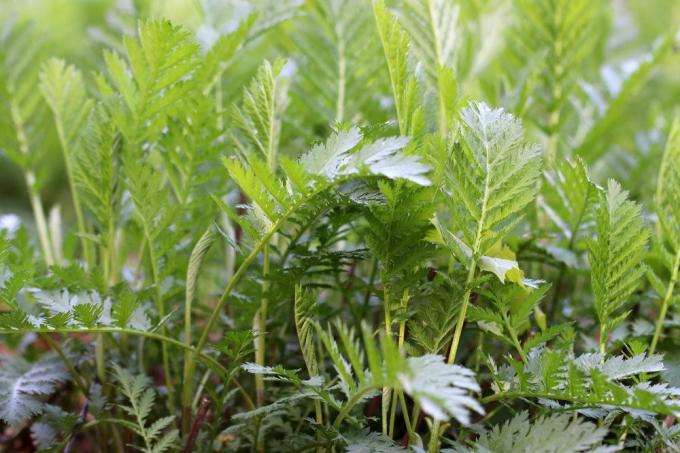
- Bracken (Pteridium aquilinum)
- Tansy (Tanacetum vulgare)
- Fern (Dryopteris)
- 100 g fresh leaves
- 1 liter of water
approach
Put the shredded fern leaves in a saucepan, pour water over them and let the whole thing simmer gently over low heat for about an hour. After cooling, sift out any solid parts of the plant. The brew can be sprayed undiluted onto the infested plants.
From garlic to black tea
garlic
who garlic or other leeks from the genus Allium like putting onions or leeks between your crops, you can use it to get rid of aphids as well as voles. In the case of indoor plants, an infusion from the strong-smelling tubers has proven itself as a defense against aphids.
- 50 g fresh garlic
- 1 liter of water

approach
Chop the garlic into small pieces and pour boiling water over them. After 30 minutes of steeping time, strain through a cloth and allow to cool completely. Then spray undiluted onto the aphids.
Neem oil
Using neem oil to get rid of the aphid infestation is easy. All you need is some neem tincture from the drugstore or pharmacy, water and a flower spray bottle.
- about 30 drops of neem oil
- 1 liter of water
Oregano tea
Oregano contains substances that work against white aphids. As a spray, it is not only quick to produce, but also completely harmless to humans and pets.

- 100 g fresh oregano
- alternatively 10 g dried oregano leaves
- 1 liter of water
approach
Pour the oregano with boiling water like a tea and let it steep for about 20 minutes. Strain the solid ingredients over a cloth or sieve and let the tea cool to room temperature. Dilute 1: 3 before spraying.
Horse chestnut (Aesculus hippocastanum)
Less known, but still very effective against lice, are the brown fruits of the horse chestnut. The common horse chestnut is widespread here. There is sure to be a chestnut tree near you.
- 10 ripe chestnuts
- 1 liter of water
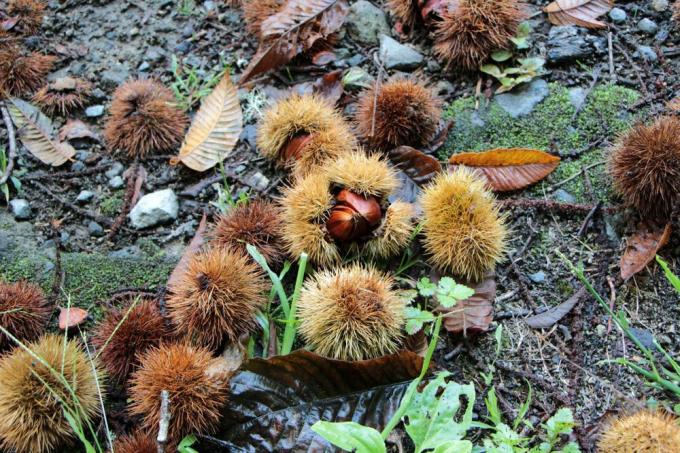
approach
Chop or mash the chestnuts and let them simmer in the water over low heat for about 30 minutes. After cooling and sifting, you can finally spray the broth undiluted on infested plants.
Black tea
A popular and good home remedy for aphids of all kinds is black tea. To do this, simply pour one liter of boiling water over two tea bags and let it steep for at least twenty minutes. After cooling, the tea is used in a spray bottle.
